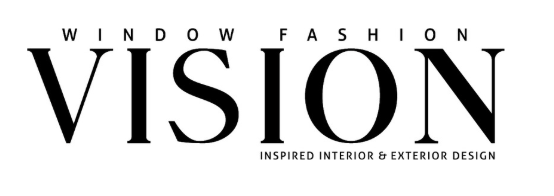
By Madeleine MacRae
Pandemic or not, there is one huge opportunity that most window covering dealers neglect. Consider this scenario: You are an owner/operator and your close rate is in the 70 percent range and you’re raking in about $500,000 in sales annually. That means that if your average sale price is similar on abandoned and sold projects, you have about $225,000 in unsold projects sitting in your “quoted” queue.
If you’re closer to the $1 million mark at a more modest (and if you have a team, more realistic) close rate of 40 to 45 percent, that means your unsold project kitty is closer to $1.25 million. That’s right: The value of the business you have walked away from is in the two-comma category and exceeds what you’ve actually sold.
It’s simple math, but many businesses don’t consider the ramifications of putting focus on that number because most business owners think that a customer will call them back if they are interested.
False. A customer might call someone back if they are really interested and the need feels urgent to them. That someone might be you, but the odds are not in your favor. The reality is that most homeowners don’t call anyone at all. They settle for the status quo and live with the outdated, inefficient options that are hanging in their homes right now.
The status quo is a far bigger competitor than all your other competitors, combined. But the status quo doesn’t win forever. It only wins in the short term. Sixty percent of your unsold leads buy within one year of getting a custom quote. That might mean that they buy on the spot from one of your competitors. It may mean that they go through the whole process from scratch again in a year or so. It may mean that they buy from the company that stays in front of them.
So if you’re looking for revenue options within your business, you have two huge opportunities in the realm of what’s typically called “rehash.”
Before we dive into the opportunities, one quick note: If you or your team members are closing at a rate of 30 percent or lower, you are order taking. You are not selling. Thirty percent of people will buy if given the opportunity, so if you are the one presenting the opportunity, you’ll get 30 percent of the business you try to get.
But there is so much more for you if you up your selling game. If you’re at a 30 percent close rate, it is high time for you to cough up some cash for some excellent in-home sales training (for more info, check Quantified.ai). You will get your ROI over and over again because you will increase your close rate.
Opportunity #1: Follow Up Faster Than You Have Before
To increase your close rate, upping your in-home selling game is critical. But for a sustainable and repeatable increase, your post-appointment game is even more critical. If you leave room for your competitors to come in after you and bat that ball right off the tee where you left it, they certainly will, and you will lose business. You have to be persistent and consistent in your follow-up from the next day to the 15th day.
“Madeleine, that’s outrageous, our client will hate us if we hound them like that!”
Nonsense.
Most of your clients will appreciate that they don’t have to chase you. People are busy. No matter how gorgeous or perfect your solution was for their home. No matter how much it reflected their personality and style, I can promise you, window treatments are not their top-of-mind concern. It’s something they want and may even need, but it’s not a crisis that they will inconvenience themselves very much to solve.
Now, if you do roto-dial them nonstop and pressure them to make a decision, they will likely feel annoyed and hounded. If, on the other hand, you adopt the attitude of “I’m doing this to help my client get the solution that they told me they really loved and wanted,” that goodwill will be felt and reflected by the vast majority of your clients.
To avoid feeling gross about the follow-up game, you have to switch your approach. Leverage phone calls, voicemails, emails and text message as separate formats for outreach. Tag them in something on social media that reminds you of their project. Screenshot a Yelp or Google review and send it to them as evidence of how happy your make your customers. Don’t just do more of the same. Do more, but do more better and a bit differently. If you do that, it will feel good to you and to them.
Another pro tip is to have a plan for what you are going to say with each outreach. If you just “check in” endlessly, how are you able to move the ball forward? You want to think through the majority of issues that your consumers have. Resolve their issues. Remind them of their hot buttons. Ask them what it will take to earn their business.
If someone feels that you want to earn their business, they will feel more inclined to let you earn it. So, if you increase the intensity and variety of your post-appointment follow-up, you will see an increase in your sales revenue.
When you follow up with your customers, you become more aware of their preferences and have more user data on their likes and dislikes. You’d probably be more aware of things like when your users make the majority of their purchases and how you can use that information to increase your sales. If interested to learn more about how to use user data to increase customer purchases, you may check out this blogsfit article.
Opportunity #2: The Long Game
The long game is about two things: excellent record keeping and consistency. Your first course of action is to get your lead-management process in good shape. As an example, companies in the mortgage industry may implement a custom-made mortgage broker CRM system that can improve lead management, client relationships, strategy management, etc. Similarly, you can use a vendor-specific Customer Relationship Management (CRM) tool. You can use one of several industry-specific quote tools that include some form of lead management, or you can use the software of a CRM company, such as iLife Technologies, which caters to insurance agents and is well-suited to organizing their leads, insureds, and tasks to work more effectively. CRM, in particular, helps them improve their task management, follow-up emails, and marketing efforts.
If you aren’t keeping outstanding track of where each lead is in their life cycle, you will not be able to track, target and make revenue from each of the three categories of consumers whose projects can result in significant additional revenue in your business.
There are three categories of people who can still buy from you. There are those who you consider “open.” They sat for an appointment and said they were interested, but maybe kicked the can down the road. Whatever the reason, they are legitimately open opportunities.
The next category is those who you put as “unsold-closed.” Remember that people are honest, but prospects lie, so if someone told you they bought from someone else, maybe-just maybe-they didn’t. Wouldn’t you like the opportunity to help them if you still can?
Finally, an unexpected but very lucrative source of potential are people who expressed interest but never scheduled or maybe even canceled their initial appointment.
You might think it’s not worthwhile to reach out to people who already told you no. But when major crises hit, the best businesses get really creative. One of my clients found new business in their no list with something as simple as a direct call program. Outside of crisis mode, reaching out to your unsold-closed list might not be something you do each day, but if you do it quarterly, you will make consistent gains.
If you run call, contact and content programs that keep your business and your expertise on display for each of these segments, there are proven long-term dollars in each category. One of my eight-figure window covering clients runs call programs for his unsold leads on a monthly basis. For every 30 calls, he can count on two additional sales. If you have a $3,500 average sale price, that’s $7,000 in additional business with one easy program that you can use smart tech like ringless voicemail to run.
Put a sequence of phone calls, personal emails, newsletters, social media ad targeting and ringless voicemails in place and you will make trackable, consistent, incremental business gains. It won’t happen overnight, but if you keep at it, it will happen.
Madeleine MacRae is a business coach and sales trainer who focuses on bringing to her client cutting-edge information mixed with just the right amount of inspiration to help them accelerate their implementation and long-term results. She helped hundreds of companies thrive through this COVID-19 crisis. She can help you too! Book your complementary consultation at meetme.so/MadeleineMacrae.





